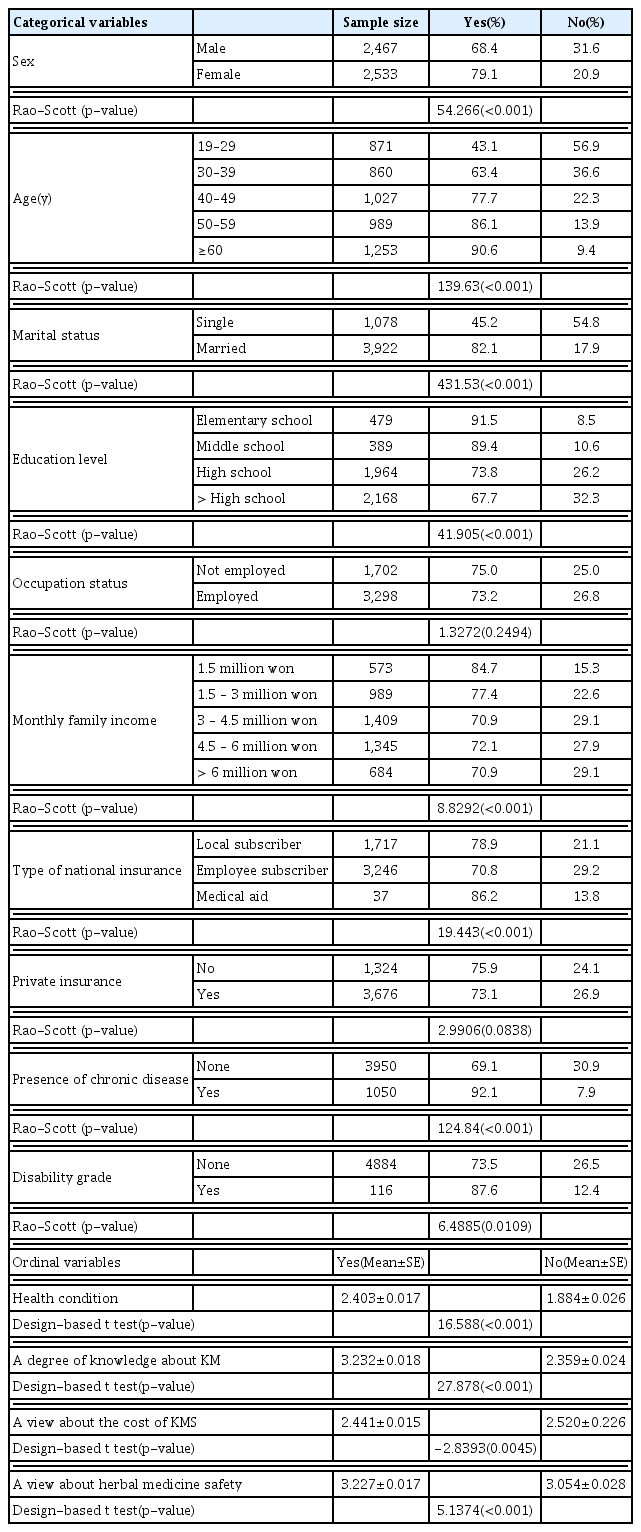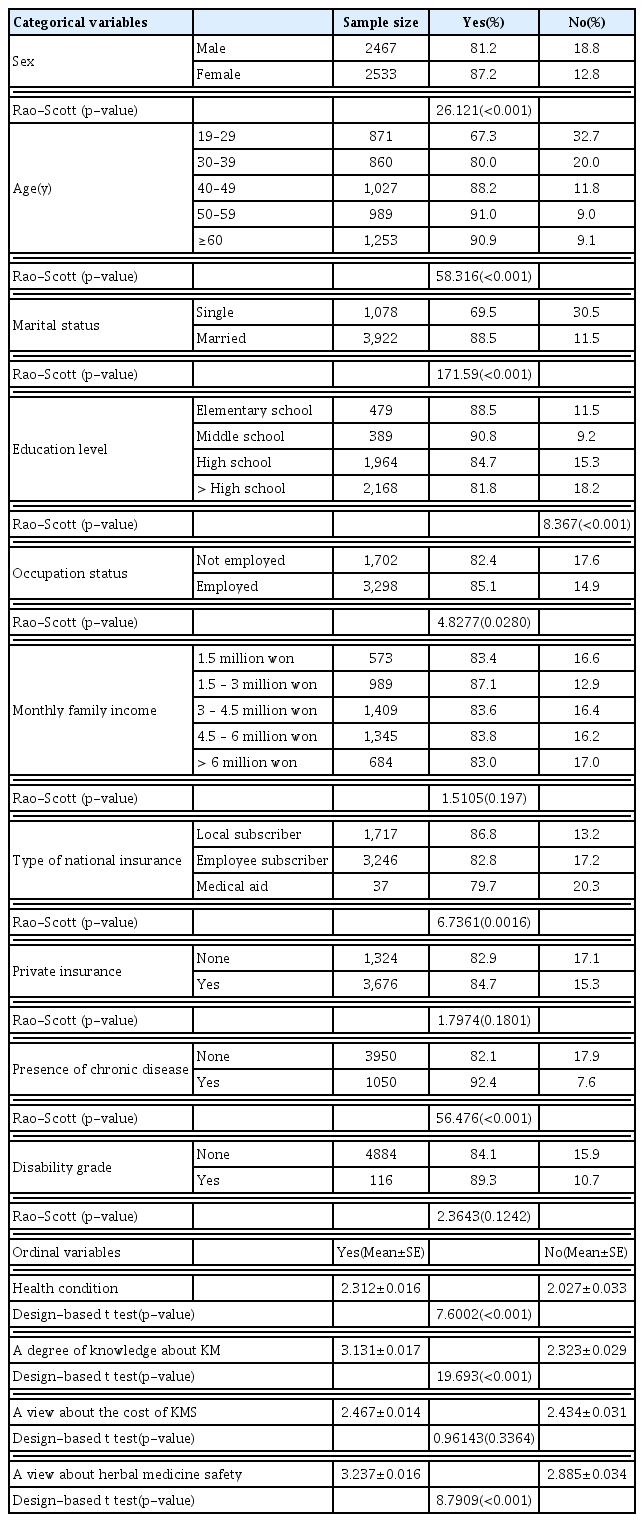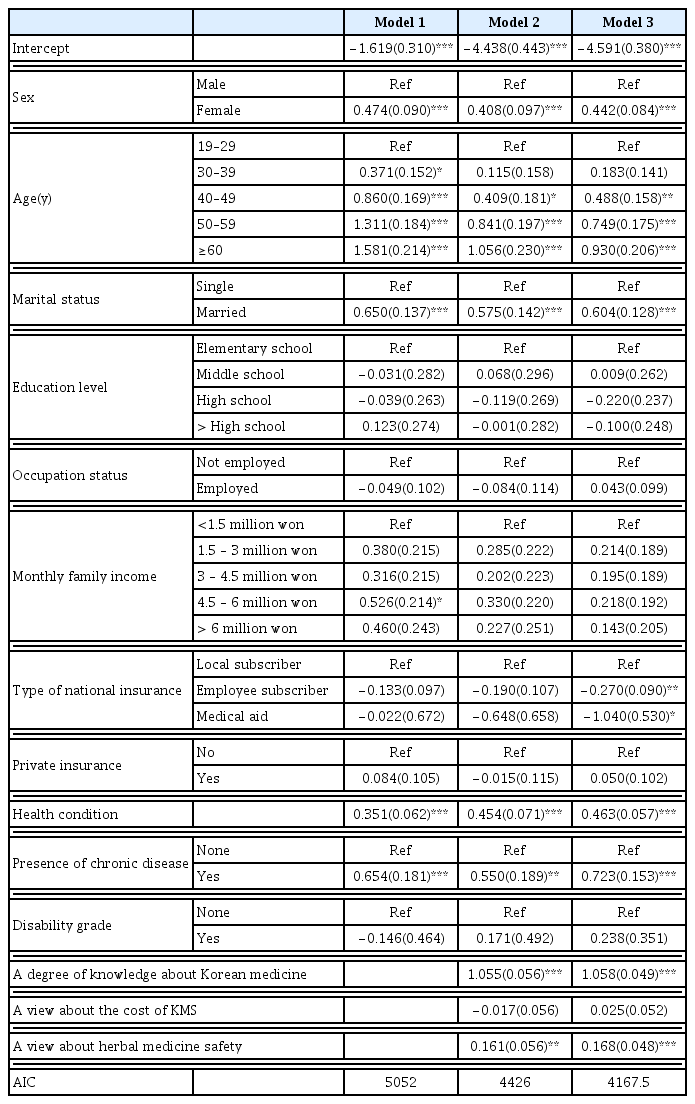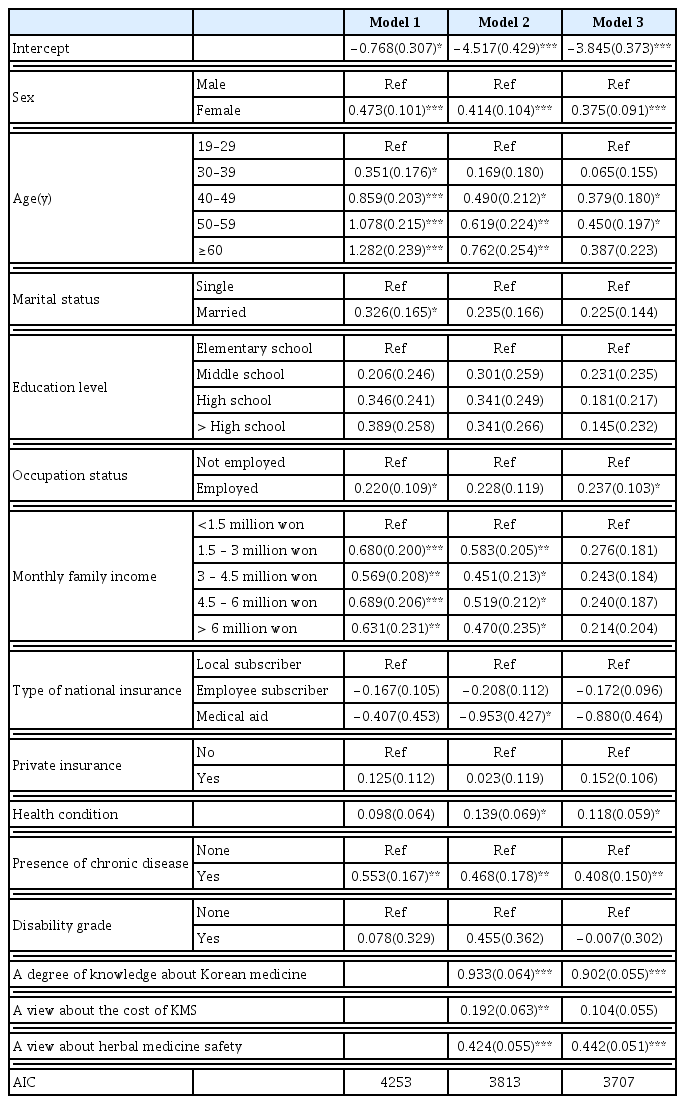References
1. Moon KH. The Analysis of Trends and Determinants of Korean Medical Service Utilization in Outpatients. Ph.D. diss Kyung Hee University; 2017.
2. Nam H. Study on the Factors of Korean Middle-Aged and Older Groups’ Use of Traditional Korean Medicine Outpatient Care: Using the 2010–2014 National Health and Nutrition Survey Data. Masters diss Yonsei University; 2019.
3. Lee JT, Park YJ, Park YB, Lee SC, Huh Y. A Study on the Selection and Usage of Traditional Medicine Based on the Outpatients of Oriental Medicine Clinic. Journal of Korean Institute of Oriental Medical Diagnostics 2006;10(1):153–65.
4. Park ST. Determinants of Utilization and Satisfaction of Western and Oriental Medical Care. Masters diss Yonsei University; 2000.
5. National Institute of Korean Medicine Development. 2017. Korean Medicine Utilization and Herbal Medicine Consumption Survey Seoul: 2018. p. 57–65.
6. Yoon J, Choi S, Lee S. The Use and its Affecting Factors of patients aged 30 and over with single and multiple chronic diseases and their usage outpatient Korean medicine clinics – Based on the Ministry of Health and Welfare’s 2011 Report on usage of Korean medicine -. Journal of Society of Preventive Korean Medicine 2015;19(1):95–107.
7. Sung AD, Park H, Kim H, Lee S. The Patterns of Korean Medicine Usage with Coverage by Private Health Insurance –Based on Usage and Consumption of Korean Medicine Report in 2014-. Journal of Society of Preventive Korean Medicine 2017;21(1):67–81.
8. Park MJ, Kwon SM. Socioeconomic Determinants of Korean Medicine Ambulatory Services: Comparing Panel Fixed Effect Model with Pooled Ordinary Least Square. Health Policy and Management 2014;24(1):47–55.
9. Cassy SR, Natário I, Martins MR. Logistic Regression Modelling for Complex Survey Data with an Application for Bed Net Use in Mozambique. Open Journal of Statistics 2016;6:898–907.
10. Cho KS. The Differences in Behaviors of Utilization on Western and Oriental Medical Care in Korea. Ph.D. diss Yonsei University; 2001.
11. Andersen R. A behavioral model of families’use of health services Chicago: Center for Health Administration Studies; 1968. 1974.
12. Akaike H. A New Look at the Statistical Model Identification. IEEE Transactions on Automatic Control 1974;19(6):716–23.
13. Kim SY, Park JY. The Utilization of Western and Oriental Medical Services by Outpatients with Musculoskeletal System Disorders and Its Related Factors. The Korean Journal of Health Service Management 2012;6(1):27–38.
14. Yoo JH, Kim YJ, Ku BC, Lee SW. Differences in Behaviors of Utilization on Western and Oriental Medical Care according to Korea National Health and Nutrition Examination Survey. Korean J Oriental Physiology & Patholog 2011;25(3):582–8.
15. Andersen RM, Davidson PL. Improving access to care in America: Individual and contextual indicators. In : Andersen R, Rice TH, Kominski GF, eds. Changing the US Health Care System: Key Issues in Health Services, Policy, and Management 2nd ed.th ed. San Francisco: Jossey-Bass; 2001. p. 3–31.
16. Burden S, Probst Y, Steel D, Tapsell L. The impact of complex survey design on prevalence estimates of intakes of food groups in the Australian National Children’s Nutrition and Physical Activity Survey. Public Health Nutr 2012;15(8):1362–72.
17. Heeringa SG, West BT, Berglund PA. Applied survey data analysis Boca Raton: CRC Press; 2010.
18. Chung CE. Complex sample design effects and inference for Korea National Health and Nutrition Examination Survey data. Korean J Nutr 2012;45(6):600–12.






